
The Drummer of Tedworth is the case of an alleged poltergeist manifestation in the West Country of England, recorded by Joseph Glanvill in his book Saducismus Triumphatus (1681). [1]

The Drummer of Tedworth is the case of an alleged poltergeist manifestation in the West Country of England, recorded by Joseph Glanvill in his book Saducismus Triumphatus (1681). [1]
Early accounts reported that in 1661 a local landowner, John Mompesson, owner of a house in the town of Tedworth (now called Tidworth, in Wiltshire), had brought a lawsuit against an unlicensed vagrant drummer William Drury, whom he accused of collecting money by false pretences. After he had won judgment against the drummer, the drum was turned over to Mompesson by the local bailiff. Mompesson then found his house plagued by nocturnal drumming noises. It was alleged that the drummer had brought these plagues of noise upon Mompesson's head by witchcraft. [2] Drury was said to have been associated with a band of gypsies.
Glanvill, who visited the house in 1663, had claimed to have heard strange scratching noises under a bed in the children's room. [3] [4]
On Christmas Day 1667, Samuel Pepys, in his diary, records his wife, Elizabeth, reading the story to him. He found it to be "a strange story of spirits and worth reading indeed."
In 1668, Glanvill published one of the earlier versions of Saducismus Triumphatus, his A Blow at Modern Sadducism ... To which is added, The Relation of the Fam'd Disturbance by the Drummer, in the House of Mr. John Mompesson.
Reverent John Wesley made reference to the Drummer at Tedworth in his journal:
The famous instance of this, which has been spread far and wide, was the drumming in Mr Mompesson's house at Tedworth; who, it was said, acknowledged, 'It was all a trick, and that he had found out the whole contrivance.' Not so, my eldest brother, then at Christ Church, Oxon, inquired of Mr Mompesson, his fellow collegian, 'Whether his father had acknowledged this or not.' He answered, 'The resort of gentlemen to my father's house was so great, he could not bear the expense. He therefore took no pains to confute the report, that he had found out the cheat: although he and I, and all the family knew the account which was published, to be punctually true.' [5]

In 1716 the Whig writer and politician Joseph Addison wrote a play The Drummer inspired by events at Tedworth. However, he updated the story to the recent War of the Spanish Succession and gave a rational explanation for the ghostly drumming; a returning veteran thought killed in action does it to scare off two suitors from his now wealthy "widow." [6]
Charles Mackay, in his Extraordinary Popular Delusions and the Madness of Crowds (1841), considered the phenomena to be undoubtedly fraudulent produced by confederates of the drummer and suggested Mompesson was easily deceived. [7]
Amos Norton Craft (1881) also suggested that the phenomena were the result of trickery:
We are to remember also, that the house of Mr. Mompesson contained several servants who doubtless possessed a good degree of human nature; Mr. Mompesson had caused the arrest and imprisonment of a member of a band of gypsies, who were intensely enraged at him on that account that the disturbance ceased as soon as the gypsy was transported beyond the sea and his associates had no farther hope of his release; that these manifestations began again as soon as the gypsy returned from transportation; that the gypsy professed to be the cause of the disturbance, and that the excited imagination would naturally add to the manifestations which the enraged trickster really produced. [8]
Addington Bruce (1908) has argued that the phenomenon was fraudulently manufactured by Mompesson's own children, especially his oldest daughter, a girl of ten. Bruce wrote that the noises and movement of objects were reminiscent of pranks and often occurred in the children's bedroom. Bruce noted that Glanvill "passed only one night in the haunted house, and of his several experiences there is none that cannot be set down to fraud plus imagination, with the children the active agents." [9]
Andrew Lang of the Society for Psychical Research wrote that "the Drummer was suspected, but, consciously or not, the children were probably the agents." [10]
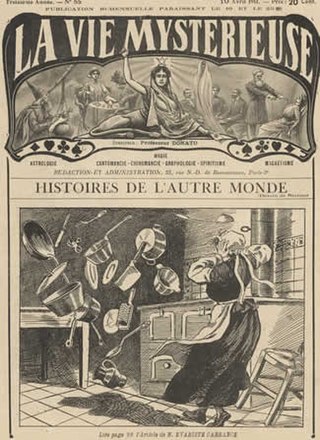
In German folklore and ghostlore, a poltergeist is a type of ghost or spirit that is responsible for physical disturbances, such as loud noises and objects being moved or destroyed. Most claims or fictional descriptions of poltergeists show them as being capable of pinching, biting, hitting, and tripping people. They are also depicted as capable of the movement or levitation of objects such as furniture and cutlery, or noises such as knocking on doors. Foul smells are also associated with poltergeist occurrences, as well as spontaneous fires and different electrical issues such as flickering lights.

Joseph Glanvill was an English writer, philosopher, and clergyman. Not himself a scientist, he has been called "the most skillful apologist of the virtuosi", or in other words the leading propagandist for the approach of the English natural philosophers of the later 17th century. In 1661 he predicted "To converse at the distance of the Indes by means of sympathetic conveyances may be as natural to future times as to us is a literary correspondence."

Saducismus triumphatus is a book on witchcraft by Joseph Glanvill, published posthumously in England in 1681.

The Wonders of the Invisible World was a book written by Cotton Mather and published in 1693. It was subtitled, Observations As well Historical as Theological, upon the Nature, the Number, and the Operations of the Devils. The book defended Mather's role in the witchhunt conducted in Salem, Massachusetts. It espoused the belief that witchcraft was an evil magical power. Mather saw witches as tools of the devil in Satan's battle to "overturn this poor plantation, the Puritan colony", and prosecution of witches as a way to secure God's blessings for the colony.
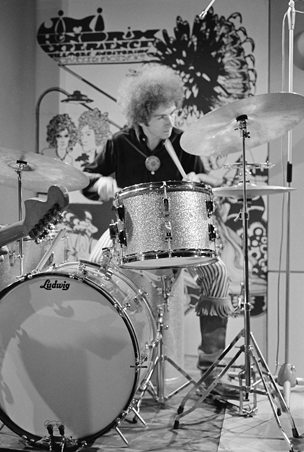
John Graham "Mitch" Mitchell was an English drummer and child actor, who was best known for his work in the Jimi Hendrix Experience for which he was inducted into the Rock and Roll Hall of Fame in 1992. He was inducted into the Modern Drummer Hall of Fame in 2009.

Henry More was an English philosopher of the Cambridge Platonist school.
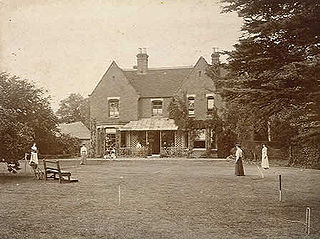
Borley Rectory was a house located in Borley, Essex, famous for being described as "the most haunted house in England" by psychic researcher Harry Price. Built in 1862 to house the rector of the parish of Borley and his family, the house was badly damaged by fire in 1939 and demolished in 1944.

Albert Sidney Fleischman was an American author of children's books, screenplays, novels for adults, and nonfiction books about stage magic. His works for children are known for their humor, imagery, zesty plotting, and exploration of the byways of American history. He won the Newbery Medal in 1987 for The Whipping Boy and the Boston Globe–Horn Book Award in 1979 for Humbug Mountain. For his career contribution as a children's writer he was U.S. nominee for the biennial, international Hans Christian Andersen Award in 1994. In 2003, the Society of Children's Book Writers and Illustrators inaugurated the Sid Fleischman Humor Award in his honor, and made him the first recipient. The Award annually recognizes a writer of humorous fiction for children or young adults. He told his own tale in The Abracadabra Kid: A Writer's Life (1996).
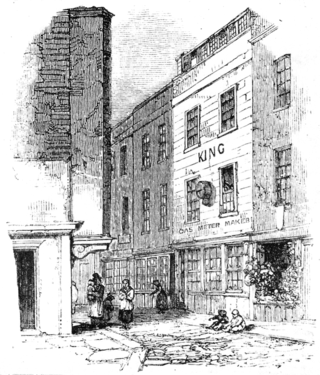
The Cock Lane ghost was a purported haunting that attracted mass public attention in 1762. The location was a lodging in Cock Lane, a short road adjacent to London's Smithfield market and a few minutes' walk from St Paul's Cathedral. The event centred on three people: William Kent, a usurer from Norfolk; Richard Parsons, a parish clerk; and Parsons' daughter Elizabeth.

A witch bottle is a apotropaic magical item used as protection against witchcraft. They are described in historical sources from England and the United States. The earliest surviving mention is from 17th-century England.

Hans Holzer was an Austrian-American author and parapsychologist. He wrote more than 120 books on supernatural and occult subjects for the popular market as well as several plays, musicals, films, and documentaries, and hosted a television show, Ghost Hunter.
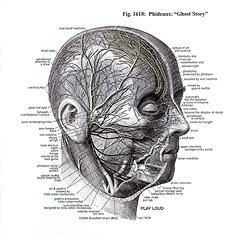
Ghost Story is the second album released by composer Phideaux Xavier.

Blockula was a legendary island where the Devil held his Earthly court during a witches' Sabbath. It was described as containing a massive meadow with no visible end, and a large house where the Devil would stay.
"The Scholar-Gipsy" (1853) is a poem by Matthew Arnold, based on a 17th-century Oxford story found in Joseph Glanvill's The Vanity of Dogmatizing. It has often been called one of the best and most popular of Arnold's poems, and is also familiar to music-lovers through Ralph Vaughan Williams' choral work An Oxford Elegy, which sets lines from this poem and from its companion-piece, "Thyrsis".
Watseka Wonder is the name given to the alleged spiritual possession of fourteen-year-old Lurancy Vennum of Watseka, Illinois in the late 19th century.

The Possessed is a 2009 documentary style horror film which was released to DVD in May 2009 and had its television debut in October that same year on SyFy.
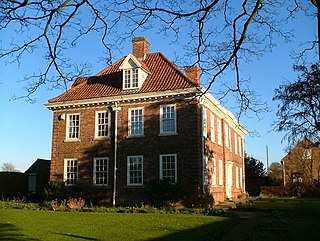
The Old Rectory in Epworth, Lincolnshire is a Queen Anne-style building, rebuilt in 1709, which has been restored and is now the property of the Methodist Church of Great Britain, who maintain it as a museum. The rectory was home to the rector of Epworth from 1697 to 1735, the Reverend Samuel Wesley, his wife Susanna and their 19 children, one of whom, John Wesley, grew up to become a founder of Methodism. On 9 February 1709, while the Wesleys were resident, a fire burnt down the wooden rectory and it was rebuilt in brick. The Old Rectory is a Grade I listed building.
The Drummer of Cortachy is the name given to a spirit who is thought to haunt Cortachy Castle. There are many interpretations of the story, but he is variously thought to portend the death of a member of the Ogilvy family, Earl of Airlie or the owners of Cortachy Castle. He is said to be nine foot tall and is occasionally accompanied by ghostly pipes. The legend can trace its roots back to at least the 19th century and the death of the 14th Earl of Airlie. He is said to play a tattoo when he appears.
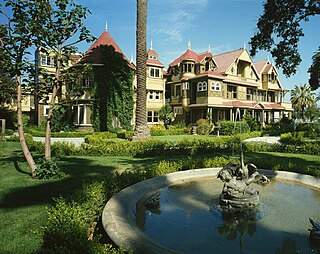
There are many reportedly haunted locations in San Francisco, California. According to ghost hunters, over 100 sites in the San Francisco Bay Area are reported to be haunted.
The Stockwell ghost, also known as the Stockwell poltergeist, was an alleged case of poltergeist disturbance in Stockwell, London, England, that occurred in 1772. It was later exposed as a hoax.